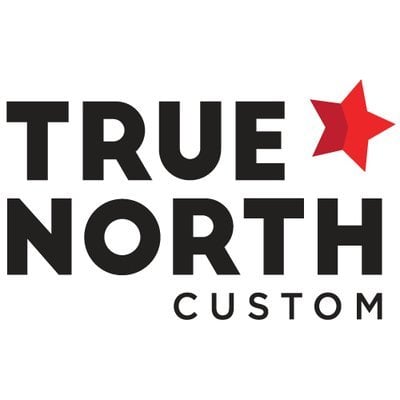
When you hear “content marketing,” you may think about writing a few blogs or being more thoughtful about what and how often you post on social media. However, an effective content marketing strategy goes much deeper than that.
Content marketing needs to be intentional and involve more than one channel. It’s a strategic approach to meeting your healthcare consumers’ needs through specific, relevant and actionable information, and it serves as a critical dimension to healthcare marketing. Many healthcare marketers underestimate the value of content marketing and how effectively it can help them connect with current and potential patients.
Plus, it’s well worth the investment of your time and marketing dollars. We know that:
Content marketing involves three complementary pieces: SEO, social media and lead generation. As you develop your content strategy, we at True North Custom recommend following these three steps.
First, define your target personas. For many healthcare marketers, this step can be the most challenging. Knowing who your audience is and what they need from you helps you not only zero in on compelling ideas but also determine the tone, approach and format of your content. You could start with consumer research and look at past performance data to understand what needs exist in the market and what people demand of you locally.
For blog content, if a mom is searching for what to do for a 4-week-old baby who has a fever, she wants an answer within the first few seconds of a blog article. You can keep the copy relatively brief and provide direct, straightforward advice. If the topic is more complex and values-based, like when a teenage girl should start using birth control, a long-form post that discusses the factors parents need to consider during the decision-making process is the way to go.
Next, document your content strategy. What are you trying to achieve and what will you execute on to meet your business objectives and your target personas’ needs? Resist the temptation to focus on topics you want to cover instead of those that matter to your target personas. As you document your strategy, include content formats, deployment strategy, promotion strategy and a measurement plan, and define key stakeholders to ensure everyone on the team is on the same page from the start.
Finally, deploy the content plan. Create, test and deploy content, and use strategies such as A/B testing of imagery and messages to understand what generates the best response so you can optimize what you’re producing.
As you plan your content, it’s important to take both macro and micro approaches. The process should include annual editorial planning and monthly tactical planning. Be sure to consider SEO performance, service line priorities and audience demands as you plan your content.
Staying nimble, especially in your monthly planning, is key to addressing consumer needs. Invest in SEO tools, such as SEMrush or BrightEdge, run competitive gap analyses and look for trends in the market. Follow the leaders in healthcare blogging, such as Cleveland Clinic and WebMD. Take note of what they’re writing about and what’s receiving coverage from major news outlets. Lately, for example, stories about the RSV vaccine have abounded. Coverage of this topic by a health system can be much more impactful in local settings than a story in a national media outlet.
Staying ahead of emerging search trends is extremely important. The time to produce cardiovascular content to promote during American Heart Month in February is in late fall and early winter, before heart month begins. Educating communities on the safety and benefits of the flu vaccine needs to start early, and Google needs time to index content so readers find it when they search for topics they hear or read about in other media. As for readability, using plain language principles, especially when discussing complex medical topics, is important to drive SEO performance, build relationships with consumers and spur engagement.
During the planning process, consider micro personas. Discussing management or diet for someone who’s been diagnosed with a rare disease presents an opportunity to write about the topic in a higher-level tone, thereby meeting the consumer where they are by delivering content that’s relevant to them.
When creating content, you don’t have to sacrifice engagement and creativity for the sake of research and performance, and vice versa. Some blogs are so clickbait in nature that their headlines don’t include a keyword. That’s not ideal. On the other hand, you don’t have to be super boring, direct and to the point in a headline by including a keyword to drive rankings.
People want personality. They’re entertained everywhere they go on the internet, so it’s OK as a healthcare marketer to show flair and have fun with your content and still be successful. Brightline, which provides virtual pediatric mental health services, is a good example. They’re a bit edgy and have some fun with their content, and it performs extremely well.
Master your copy first, but don’t forget about the assets that can enhance it. Use custom graphics, interviews or downloadable checklists when you’re providing advice or a list or discussing a process. For example, rich assets, such as custom graphics for Instagram Stories, can add value to diet- or exercise-related topics. Provider interviews, which you can promote on social, add personality and voice to topics like how to treat a fever. Finally, think beyond “find a doctor” or “schedule an appointment” for your calls to action. There are many other paths to direct consumers in your CTA, such as downloading a guide.
Deploying and auditing your content may not be the most exciting parts of your overall strategy, but they’re essential to success. To make the most of deployment, be sure to:
It’s important to audit your content strategy regularly. There are a lot of facets to think about as you audit, from content vehicles and methodology to resources, tech stack and performance. To really nail your regular content strategy review, however, you need to have a measurement plan.
If you just audit for its own sake without an idea about what you’re looking for in the data and what you’re trying to achieve, it’s difficult to pin down a meaningful next step. Having a goal and a target in mind helps, and that goes back to the define stage of building a content strategy. Figure out exactly what you want to achieve and use that to guide your decision-making for the year.
Looking to enhance your content’s performance? These tips can help:

True North client University of Maryland Medical System (UMMS) is an excellent example of a large health system with an integrated, multichannel content strategy that includes a print publication, blog and social. Like many health systems, UMMS prioritizes reaching underserved populations, and we’ve crafted engagement strategies for the health system to connect with these audiences. Arming underserved populations with the resources to manage chronic conditions, which often affect them disproportionately, has a huge financial benefit for health systems like UMMS, and it’s been an enjoyable and gratifying dimension of our work with them.
If you’re new to content marketing, start small. Pick a key audience or a couple of key service lines and begin there. Maybe you want to focus on women’s health. Start with four or five blog posts geared toward supporting women ages 25 to 50 as they make healthcare decisions for their family. That’s smart. Stay focused on achieving your goals and aligning to a measurement plan.
 Jane Crosby
Jane Crosby
EVP Strategy & Business Development
True North Custom
The original version of this page was published at: https://www.truenorthcustom.com/blog/keys-to-creating-an-effective-content-strategy
True North is your expert healthcare marketing agency, offering full-service, HIPAA-compliant marketing solutions.
Join us for a monthly series on social media trends, ideas to address hot topics and other content marketing tips for healthcare professionals. Each month, you'll find insights ...read more
The way healthcare organizations communicate with non-consumer audiences is critical to brand and revenue performance. Here’s how you can engage physicians, employers and other ...read more
Aligning customer needs with business goals is the crux of content marketing. This approach should apply to all content created by an organization—not just the blog.Most marketers ...read more
Search engine optimization (SEO) best practices are always subject to review and change, and healthcare SEO copywriting should adapt according to these shifts.To borrow the common ...read more